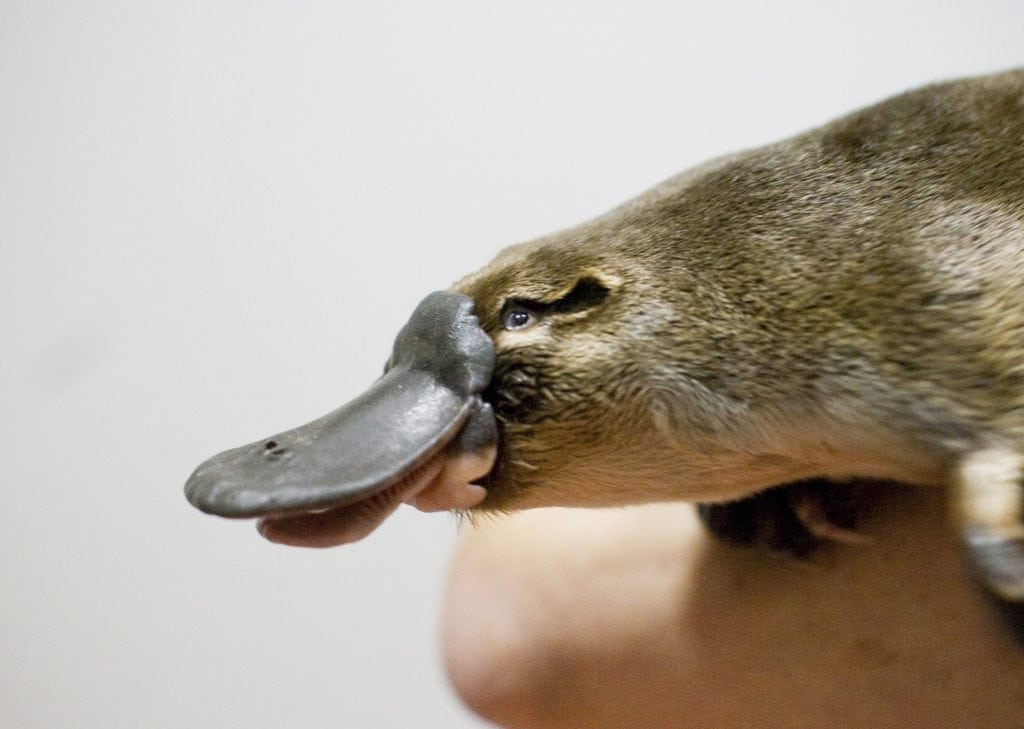Duck-billed platypuses inhabit rivers, lagoons, and streams. They prefer areas with steep banks that contain roots, overhanging vegetation, reeds, and logs. The rivers and streams are usually less than 5 meters (16.4 feet) in depth.
The platypus noted for its odd combination of primitive features and special adaptations, especially the flat, almost comical bill that early observers thought was that of a duck sewn onto the body of a mammal.
It is one of the few species of venomous mammals: the male platypus has a spur on the hind foot that delivers a venom capable of causing severe pain to humans. The platypus is an excellent swimmer and spends much of its time in the water foraging for food.

The Platypus is one of the few mammals known to have a sense of electroreception: it locates its prey in part by detecting body electricity. Platypuses are mainly nocturnal feeders, and can usually only be observed at dawn and the in the very early morning, and dusk/late evening.
Platypuses can swim through fast waters at the speed of around 1 meter per (3.3 feet) second, but when foraging the speed is closer to 0.4 meters (1.3 feet) per second. Dives normally last around 30 seconds, but can last longer, although few exceed the estimated aerobic limit of 40 seconds. Recovery at the surface between dives commonly takes from 10 to 20 seconds.














